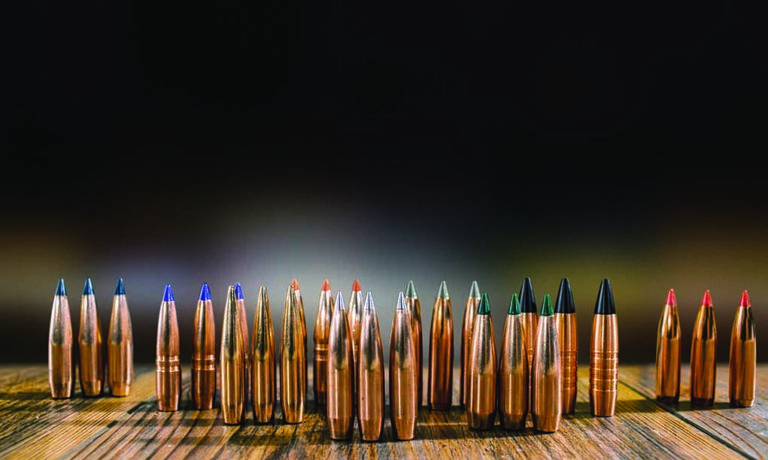
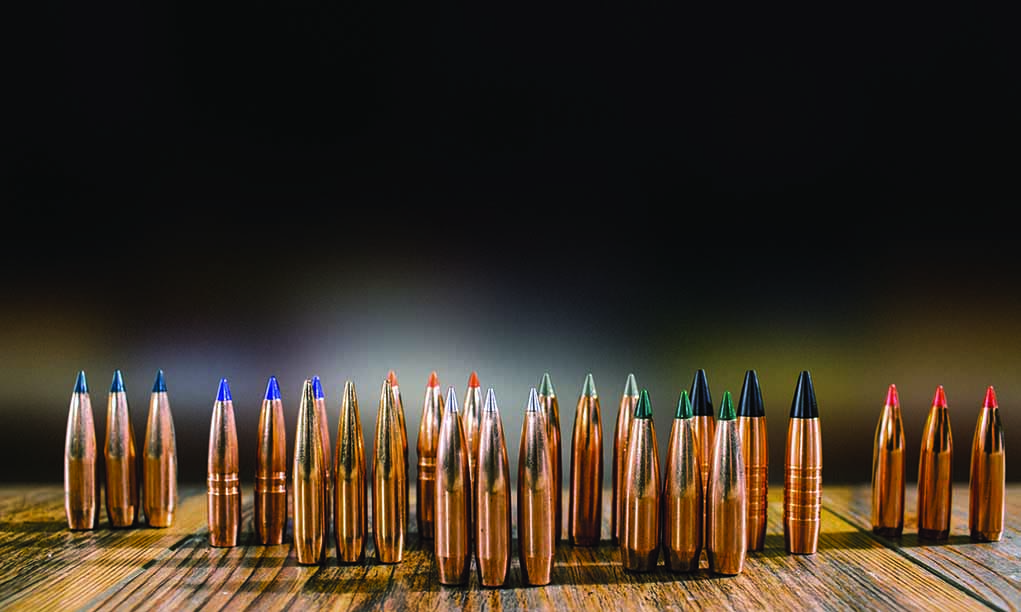
Bullet design improved by leaps and bounds in recent decades and continues to get better. See what are the hottest projectiles for 2020.
The projectile has been a part of mankind’s culture since the first rock was hurled though the air. While so many of us quibble over cartridge conformation, wood versus synthetic stocks and the barrel length of our EDC carry gun, the only part of the equation that touches a game animal, hits a target or neutralizes a threat is the bullet.
The pure lead bullet was the most popular choice (and still remains in use to this day) until the copper-jacketed bullet came into play in the late 1880s. Adding a jacket of copper drastically reduced fouling, allowed the bullet to handle velocities a lead bullet couldn’t and slowed the expansion rate.
With few exceptions, the cup-and-core bullet design remained the standard for the next 70 years or so, and the performance of this bullet style heavily influenced our cartridge choices, in both handgun and long gun, whether in expanding soft-point or full-metal-jacket configuration. John Nosler’s Partition was among the first—if not the first—radical change to the standard cup-and-core bullet design.

In addition to the construction of our bullets, the conformation has also changed radically. Many factors have allowed us to take our rifles to unprecedented distances, and the bullets have most certainly evolved with the science of long-range shooting.
Likewise, handgun bullets have experienced a parallel evolution, with the lead projectiles of the late-19th and early-20th centuries sharing time with the engineered marvels we have today. Whether you’re a hunter, target shooter or handgunner, your choice of bullet design is paramount to getting the job done.
Meat Making Bullet Designs
Nosler’s Partition sparked a revolution. We have bonded-core bullets, monometal bullets, hunting bullets designed to fragment and hunting bullets with better ballistic coefficient values than yesteryear’s target bullets; some of them have a combination of these features.
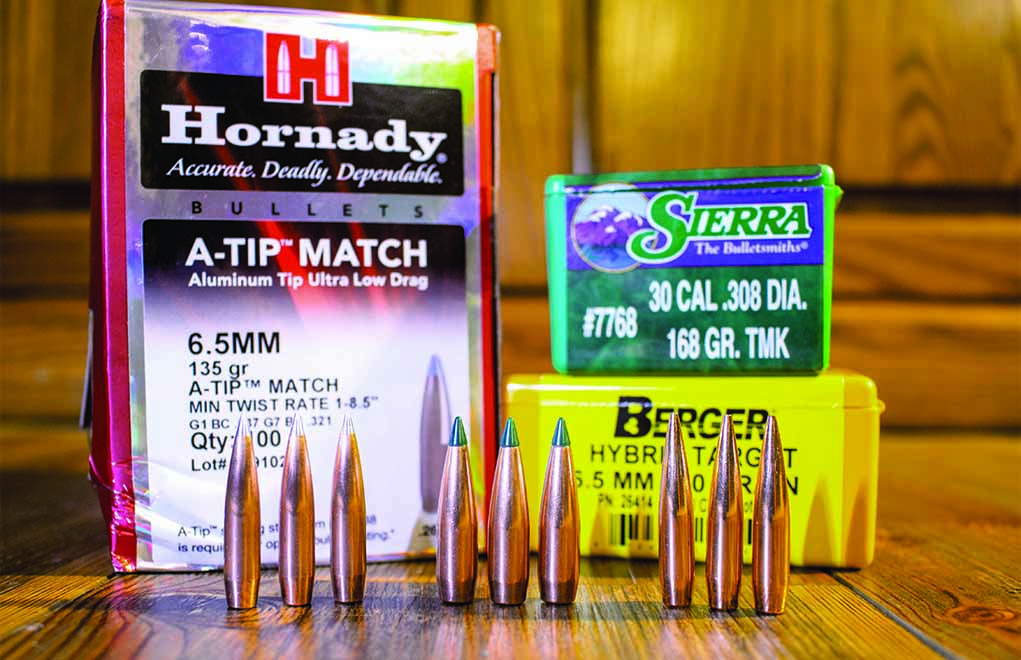
For most of us pursuing whitetail deer, a good cup-and-core bullet such as a Sierra GameKing or Hornady InterLock will definitely get the job done … if it has enough sectional density. Heavier game will surely benefit from a bonded-core bullet—which fuses the copper jacket to the lead core—because the expansion is slowed and the penetration is deeper.
Monometal bullets, such as the fantastic Barnes TSX and TTSX, Hornady GMX, Federal Trophy Copper, Norma EcoStrike and Nosler E-Tip, have no lead core (a legal requirement in some areas), so bullet separation isn’t a concern. Remember that these bullets will be longer than their lead-core counterparts of the same weight and caliber. This changes the center of gravity and, in some instances, a standard twist rate won’t stabilize a monometal bullet of common weight.
Get On Target With Bullets:
- Do Hornady A-Tip Bullets Change The Long-Range Game?
- The Science Of Choosing Bullets
- Bullet Weight: Is Bigger Really Better?
- Bullet Expansion: Velocity Is The Deciding Factor
- What You Need To Know About Gravity And Bullet Trajectory
The polymer-tipped bullet design is extremely popular as well. Nosler’s Ballistic Tip, the Norma TipStrike, Hornady’s SST and ELD-X, and Sierra’s Tipped GameKing are all excellent examples of tipped cup-and-core bullets. These bullets often use a boat tail, are wonderfully accurate and deliver rapid expansion. All these bullets are seriously accurate and work well under windy conditions, as well as at longer ranges.
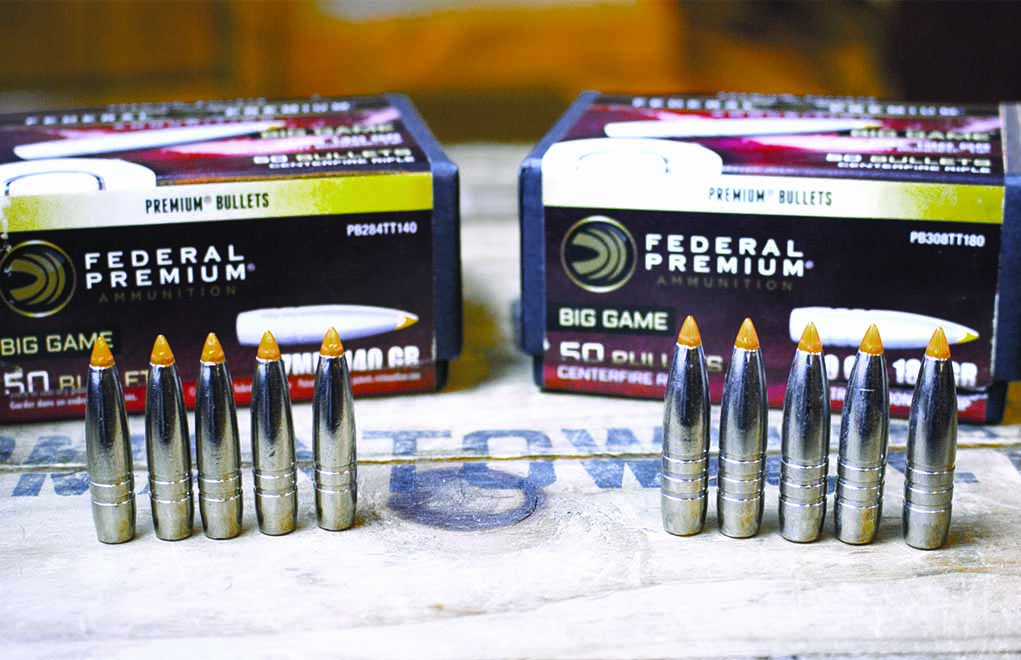
Cutting Edge Bullets uses a fragmenting design, in which the ogive of the bullet is designed to break into a set of blades that cause severe trauma for about 6 inches into the wound channel while the base of the all-copper bullet remains at caliber dimension for excellent penetration. Many of CEB’s Raptor series offer the options of using a polymer tip or for the bullet to remain a hollow-point. They, too, are seriously accurate bullets.
The bullets that mix some of these features have become incredibly popular. Federal’s Trophy Bonded Bear Claw and Trophy Bonded Tip use a lead core for the front half of the bullet—bonded to the thick jacket—with a solid-copper base. The Bear Claw is a stout bullet, even if it does have a lesser ballistic coefficient than the Trophy Bonded Tip.
I find the Trophy Bonded Tip to be a sleeper. I took this bullet to Namibia last spring in a .300 H&H Magnum and a .280 Ackley Improved and had perfect results. In fact, I didn’t recover a single bullet on the safari, even in animals as large as eland. The Trophy Bonded Tip evolved into the Edge TLR—a great bullet design for long-range hunting—and finally into this year’s new Terminal Ascent from Federal.

With its Slipstream polymer tip, an AccuChannel groove on the bullet shank (to reduce drag and fouling) and a boat-tail design, Federal has a winner here. The Terminal Ascent will give good expansion at velocities as low as 1,350 fps. In some cartridges, this will translate to more than 1,000 yards.
Now, I don’t shoot at game that far away, but it’s nice to know there’s no question of expansion at the outer limits of my own range. This bullet might just be the quintessential blend of a high ballistic coefficient, weight retention (from its bonded core), accuracy and terminal performance.
Bullets such as the Swift Scirocco, with a thick copper jacket that’s chemically bonded to the full-length lead core, along with a polymer tip and boat tail, will surely earn the favor of magnum shooters: It will hold together on close shots and yet still expand at farther distances. The Norma BondStrike is similar, making it a good choice for those who hunt at longer ranges.
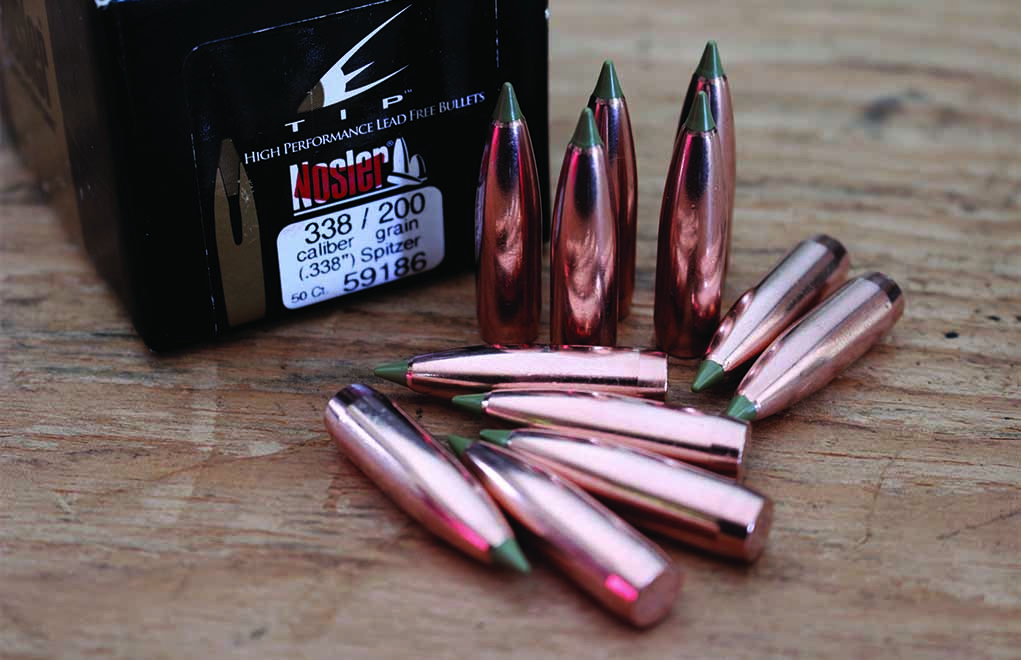
Heavy-for-caliber bullets are highly popular for hunting at longer ranges, because they retain much of their energy and resist wind deflection well. Berger’s Extreme Outer Limits Elite Hunter line uses heavyweight bullets (sometimes requiring faster twist rates) for long shots. Berger’s 170-grain, .277-inch bullet in the new .27 Nosler should make for a wonderful combination for fans of that bore diameter, giving a breath of fresh air.
So, what do you actually need? I suggest mating the choice of bullet to the game at hand. A .308 Winchester with a 150-grain cup-and-core bullet design might be perfectly acceptable for deer, even at longer ranges. Nevertheless, when you’re headed out for moose or elk, I’d sure feel better with a 175-grain Federal Terminal Ascent or 180-grain Norma BondStrike.
For bear over bait, for which shots are surely inside of 100 yards, the Trophy Bonded Bear Claw, Nosler Partition or Swift A-Frame would be well-suited, because the lesser ballistic coefficient value isn’t nearly as important as the structural integrity of the bullet.
The Sweet Ring of Steel
Like hunting bullets, target bullets have experienced the same evolution. For example, the Sierra MatchKing has been the benchmark of the target community for decades—and rightly so. Some shooters feel we need look no further, yet even Sierra has seen the wisdom of modern advancements with its Tipped MatchKing bullets. Berger’s target line, including its VLD and Hybrid bullets, and featuring the excellent J4 bullet jacket, have been widely embraced.
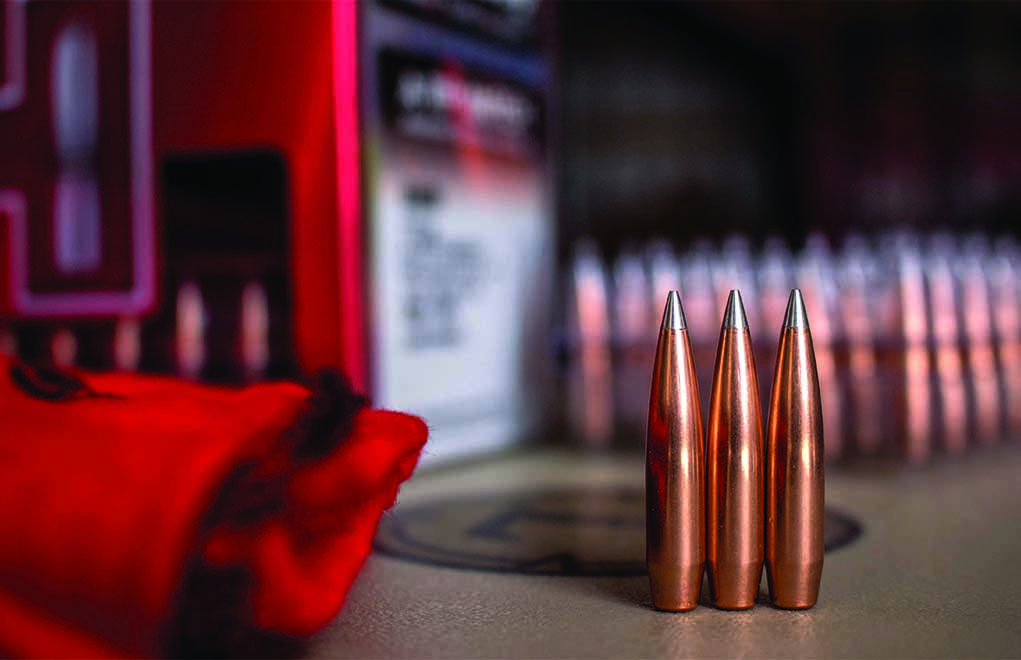
Hornady has long offered target bullets but, in recent years, it’s seriously raised the bar. Its ELD Match, with the Heat Shield tip that’s resistant to melting from friction, is certainly a wonderfully accurate target bullet. Even so, I found Hornady’s A-Tip Match design to be a step above. Using a machined aluminum tip (you can’t feel the seam between tip and jacket), this bullet is seriously consistent—and very impressive.
What do you actually need? The answer lies in an honest evaluation of how far you’ll be shooting. If you’re into the one-mile game, I’d give that Hornady A-Tip Match a long look. It’s not cheap, but it performed better than anything I’ve ever used. This is not to say there are flies on the Bergers or the Sierras: Experimenting with different bullet designs at long ranges and arriving at that magical combination is a big part of the game.
Bet Your Life on It
More folks are carrying and training with their handguns than ever before, and those guns need to be fed.
The traditional training bullets—FMJs and lead soft-points—are still valid, but each comes with its own issue. FMJs can splatter on up-close steel targets, running the risk of injury; and the lead projectiles will make a mess of your barrel. As an affordable and effective training option, I like Federal SynTech, a polymer-coated lead bullet that’s available in loaded factory ammunition and as a component.
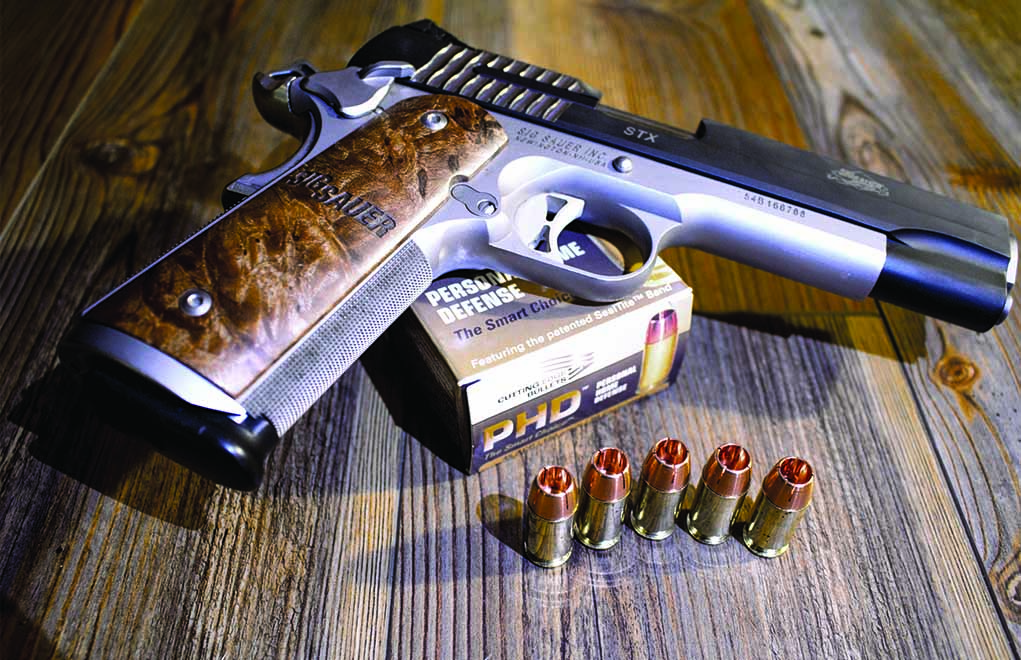
The defensive handgun bullet has come just as far as our rifle bullet. Sure, the jacketed hollow-point still works, but when you see that law enforcement adopts bullets such as Federal’s Hydra-Shok, there’s something to be said for the performance. I’m a big fan of the HST, with its consistent expansion and deep penetration.
Always pushing forward and armed with a team of brilliant engineers, Federal released the Hydra-Shok Deep, which features a redesigned centerpost in order to perform better in FBI protocol testing. The terminal performance of this bullet ranks among the best available.
Traditional designs, such as the Speer GoldDot and Hornady XTP, still work as well as they did decades ago, but even Speer has seen fit to update its design: It released the GoldDot 2, which uses a shallow hollow point filled with an elastomer for more-consistent expansion.
Monometal bullets have also made it into the handgun market. Barnes offers its XPB pistol bullet, and Cutting Edge loads its bullets in the Personal Home Defense line. Hunters can look at the Swift A-Frame line for revolvers, as well as Hornady’s FTX line.
So, with a whole bunch of great choices, both traditional and radical, what should you be carrying?
Quite obviously, the jacketed hollow-point has worked for generations and will continue to do so. But perhaps this will tell you how I feel: I carry Federal HST in my EDC gun.
The article originally appeared in the February 2020 issue of Gun Digest the Magazine.

Next Step: Get your FREE Printable Target Pack
Enhance your shooting precision with our 62 MOA Targets, perfect for rifles and handguns. Crafted in collaboration with Storm Tactical for accuracy and versatility.
Subscribe to the Gun Digest email newsletter and get your downloadable target pack sent straight to your inbox. Stay updated with the latest firearms info in the industry.

![Best Concealed Carry Guns In 2025 [Field Tested] Wilson Combat EDC X9S 1](https://gundigest.com/wp-content/uploads/Wilson-Combat-EDC-X9S-1-324x160.jpg)


![Best 9mm Carbine: Affordable PCCs [Tested] Ruger Carbine Shooting](https://gundigest.com/wp-content/uploads/Ruger-Carbine-Shooting-100x70.jpg)
![Best AR-15: Top Options Available Today [Field Tested] Harrington and Richardson PSA XM177E2 feature](https://gundigest.com/wp-content/uploads/Harrington-and-Richardson-PSA-XM177E2-feature-100x70.jpg)

All of that is great information but here’s a question. What about Bullet availability?